Are you torn between choosing a dazzling gemstone for your jewelry? Whether you’re seeking a beautiful centerpiece or considering gemstone investments, you may have come across the dilemma of diamonds versus white sapphires. With limited knowledge on the subject, it’s natural to feel confused and uncertain about which option is best for you.
You may have already turned to search engines, only to find images that appear strikingly similar, further complicating your decision. The truth is, distinguishing between these gems can be challenging, especially if gemstones aren’t part of your everyday conversations. When it comes to purchasing one of these gemstones, you need more comprehensive information than what you’ve casually come across.
But fear not! We’re here to provide you with a clear understanding of the differences, similarities, advantages, and disadvantages of diamonds and white sapphires. Our goal is to equip you with the knowledge you need to make an informed decision that you’ll feel confident about.
Though it may seem perplexing at first, stick with us, and soon you’ll grasp the intricacies of the diamond versus white sapphire debate.
DESIGN YOUR OWN ENGAGEMENT RING: START WITH A SETTING OR START WITH A DIAMOND. IT’S REALLY UP TO YOU!
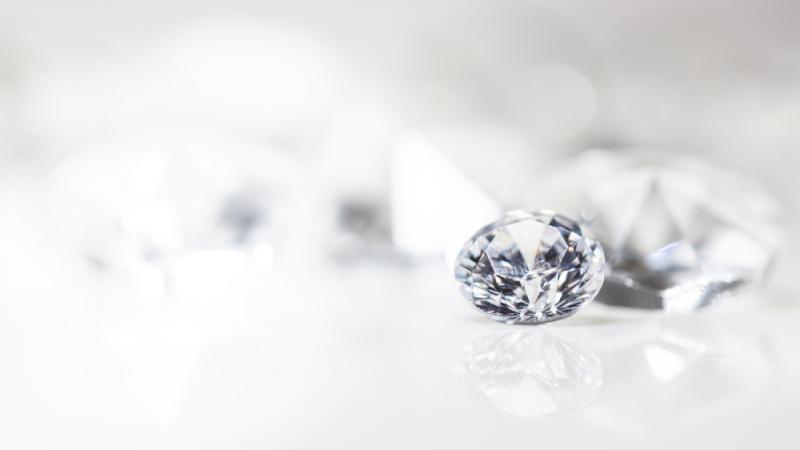
Let’s start by simplifying things and focusing on the fundamental aspects of each gemstone. By understanding the key information about diamonds and white sapphires individually, it will become easier to compare and contrast their similarities and differences.
First, let’s delve into the essential details about diamonds!
In this section, we’ll explore the color, cut, clarity, and carat weight of diamonds. Additionally, we’ll sprinkle in some fun facts along the way, as they might just be the deciding factor in your ultimate choice.
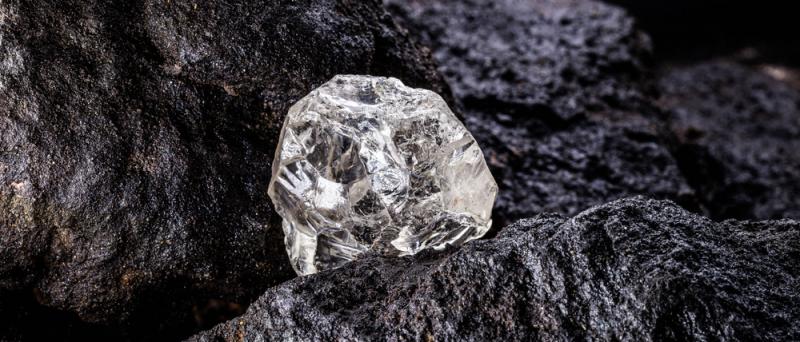
Fun Facts
Here are some fascinating facts that will make you fall even more in love with diamonds, beyond their captivating beauty:
- THEY ARE THE BIRTHSTONE OF APRIL
For those born in April, diamonds are their designated birthstone. Wearing your birthstone is believed to bring various benefits, including improved relationships, inner strength, abundance, and clarity in life. So, if you’re an April baby, it’s another great reason to indulge in a piece of diamond jewelry.
- THEY ARE BILLIONS OF YEARS OLD
Diamonds have an extraordinary history, with the oldest ones estimated to have formed around 3.3 billion years ago. Considering that the Earth itself is about 4.5 billion years old, the age of diamonds puts their existence into remarkable perspective. This extensive timescale adds to their allure and value.
- THEY ARE THE HARDEST SUBSTANCE ON EARTH
Surprisingly, diamonds, despite their delicate appearance, are the hardest substance found on Earth. Their exceptional durability makes them ideal for industrial applications, such as making tools like drills and saw blades. While natural diamonds can be costly, lab-grown diamonds offer a more affordable option with the same hardness and effectiveness.
- THEY CAN BE BURNED
Although diamonds are known for their resilience, they can actually be burned. Extreme heat between 1290 and 1650 degrees Fahrenheit (699 to 899 degrees Celsius) can cause a diamond to burn. While this scenario is unlikely in everyday circumstances, it’s possible under high-temperature conditions such as house fires or the intense heat of jeweler’s torches.
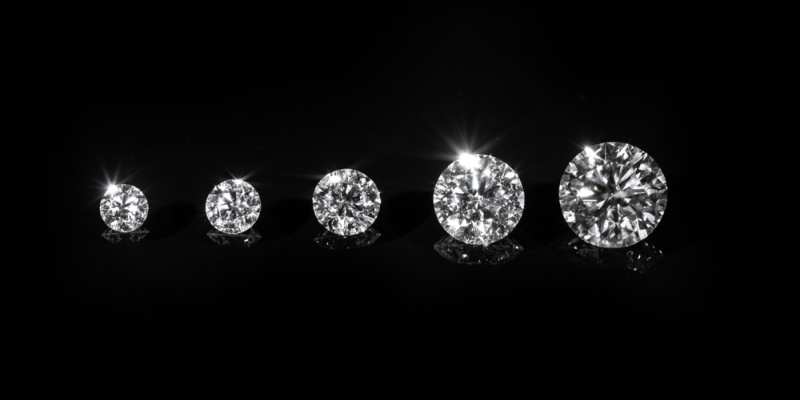
Carats
You might be thinking, “Wait, isn’t that for gold?”
Well, it’s understandable to be confused, but carats and karats have different meanings when it comes to diamonds and gold.
In the diamond world, carats are used to measure the weight of the gemstone, whereas karats are used to measure the purity of gold, with 24 karats representing pure gold.
The carat weight of a diamond is a crucial factor, as it determines the stone’s size. Generally, larger diamonds are rarer and more valuable. However, it’s important to note that the relationship between size and price is not always straightforward.
While carat size is significant, the value and price of a diamond are determined by a combination of the four C’s: carat weight, cut, color, and clarity. Sometimes, a flawless diamond with a lower carat weight can be worth more than a diamond with a higher carat weight but with some inclusions. It’s the overall combination of these factors that influences a diamond’s worth.
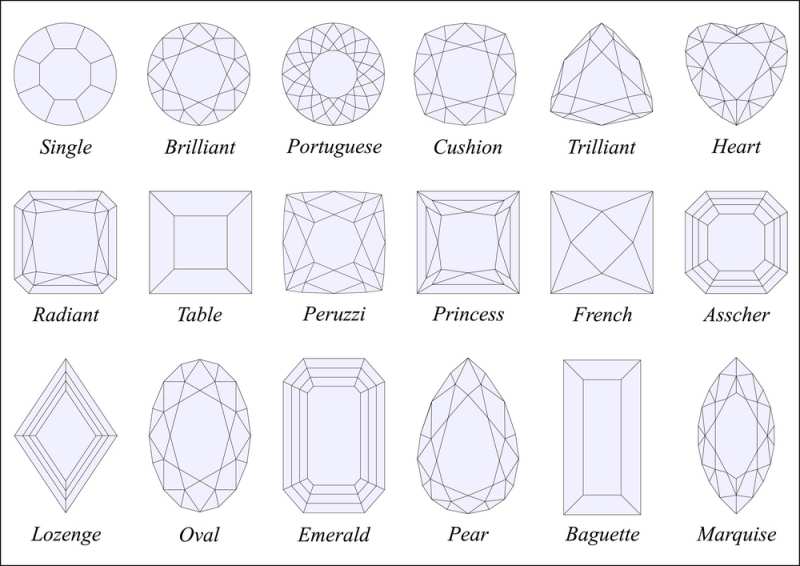
Cut
Diamonds are renowned for their dazzling sparkle, and this is attributed to the way light interacts with their facets.
When a rough diamond is brought to a jeweler, it undergoes a process of cutting and polishing. This is where the diamond’s cut is determined, taking into account factors such as proportions, brightness, finish, polish, and symmetry.
The precision of the diamond’s facets is crucial because it allows more light to enter and reflect within the stone, resulting in a brilliant and radiant appearance.
However, it’s important to remember that a diamond’s shine is not solely determined by its cut. The clarity of the diamond also plays a significant role. The cut and clarity work together to enhance the diamond’s overall brilliance and sparkle.
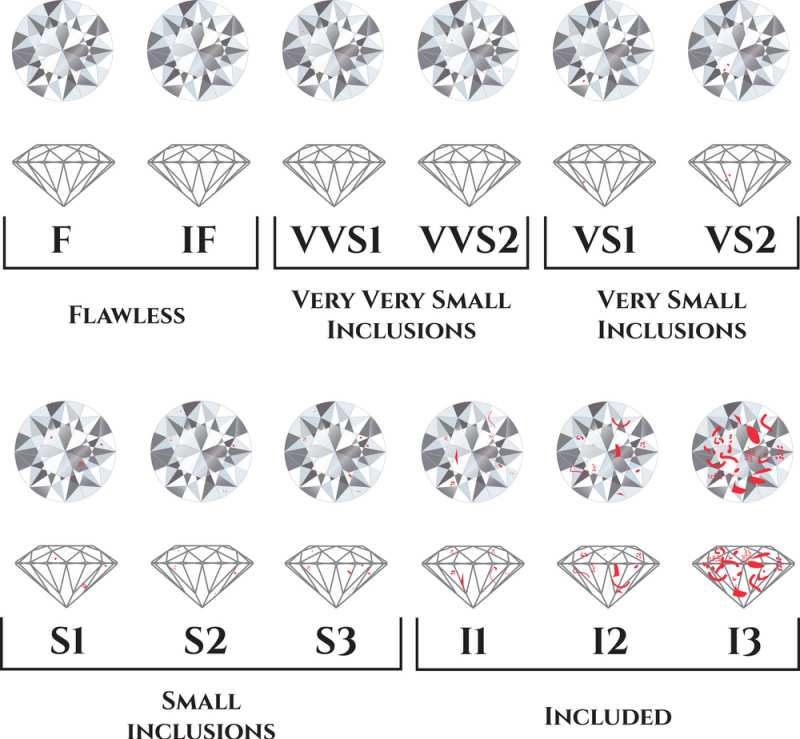
Clarity
When we admire a diamond, we often marvel at its beauty without fully appreciating the intricate details that professional jewelers observe under their magnifying glasses.
It is precisely these unseen characteristics that determine the value of a diamond.
As mentioned earlier, inclusions and blemishes are factors that affect a diamond’s clarity. Inclusions refer to internal imperfections, while blemishes are surface flaws. These imperfections can detract from the diamond’s overall clarity and perfection.
Diamonds with fewer inclusions and blemishes are considered more valuable because they are rare and harder to find. The absence of these imperfections enhances the diamond’s visual appeal and contributes to its higher worth.
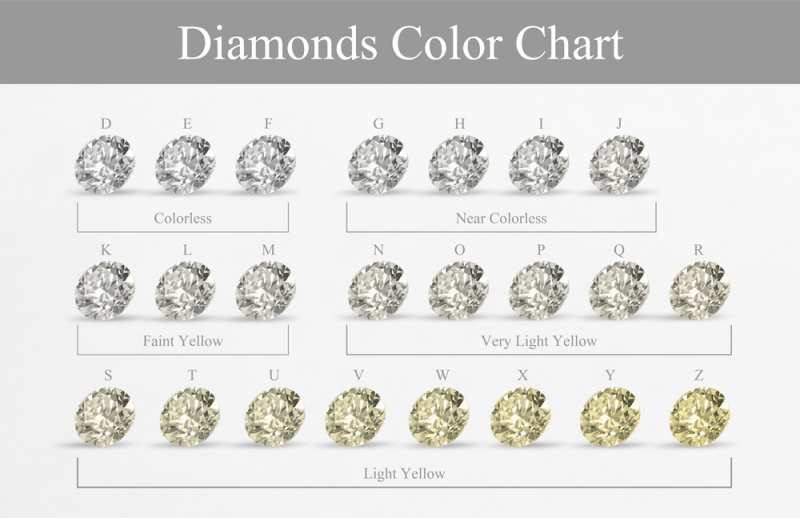
Color
Now, let’s discuss the final “C” in the diamond evaluation process – color. While the most commonly known and sought-after diamond is the white diamond, it’s important to note that diamonds can come in a range of colors. They can span from completely colorless to various shades of yellow and even light brown.
The formation process of diamonds plays a role in their color variations. At times, carbon can mix with other natural elements during their creation within the Earth, resulting in the presence of yellow or brown hues.
To assess the color of a diamond, a grading scale is used. Colorless diamonds are graded with the letters D, E, and F, while near colorless diamonds receive grades G, H, or I.
It’s worth mentioning that there are also diamonds with unique colors that do not fit within this traditional grading scale. The value of these colored diamonds is determined by their exceptional and rare characteristics.
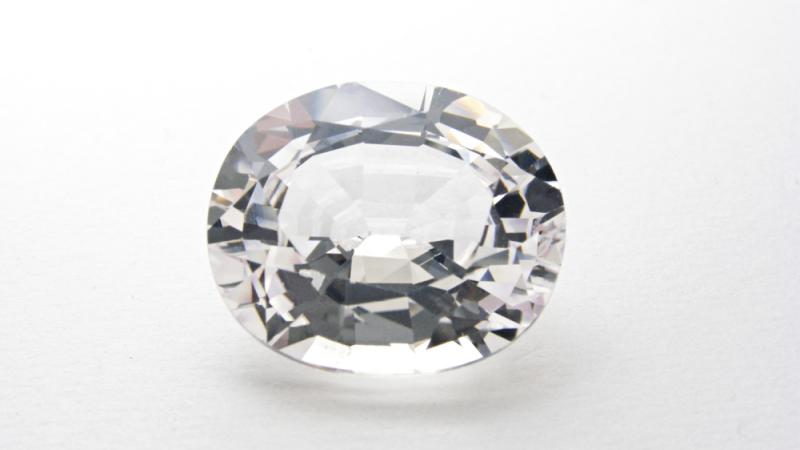
White Sapphire
In the world of jewelry, sapphires are renowned for their distinctive dark blue color. However, it’s important to note that sapphires can also occur in various other colors, including yellow, green, pink, and even white.
White sapphires, in particular, are essentially colorless versions of the classic sapphire. While they may appear similar to colorless diamonds at first glance, there are some differences to consider.
The value of white sapphires is also assessed based on the four C’s: cut, clarity, carat, and color. However, in comparison to diamonds, the color aspect is not as significant for white sapphires.
In fact, some grading entities do not assign specific grades to white sapphires. Instead, they provide descriptions for each of the four characteristics of the stone, focusing less on the color aspect.

Color
The main distinction between diamonds and white sapphires lies in their color and sparkle. Diamonds exhibit a dazzling, rainbow-colored sparkle, while white sapphires tend to emit a silvery, white-gray hue when they sparkle.
At first glance, it may be challenging to differentiate between the two, but upon closer examination and comparison, the disparity becomes evident.
The unique color of a diamond’s sparkle is attributed to its high refractive index and dispersions. On the other hand, white sapphires have fewer of these characteristics, resulting in a more subdued sparkle.
This distinction also has implications for maintenance. Diamonds have the ability to retain their brilliance even in the presence of dirt and oil, whereas white sapphires may require more frequent cleaning to preserve their stunning shine.
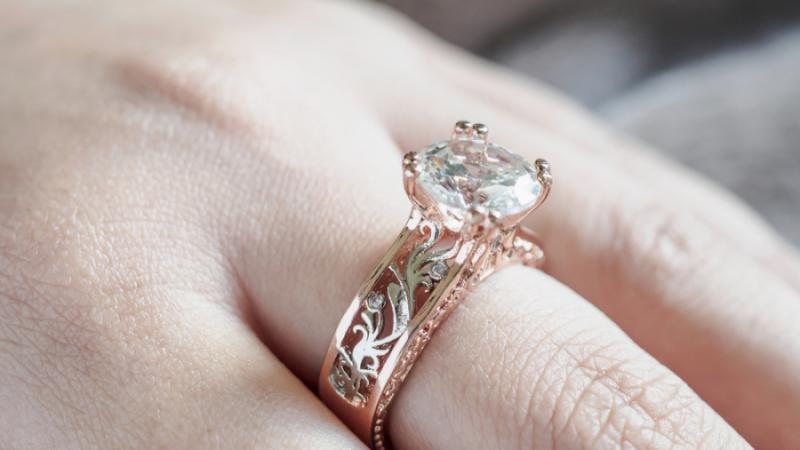
Beauty
As the saying goes, “Beauty is in the eye of the beholder,” and this comparison between diamonds and white sapphires certainly reinforces that notion.
Although diamonds are often hailed as the ultimate gemstone for jewelry, particularly engagement rings, it doesn’t mean they are universally preferred. While the sparkling brilliance of diamonds attracts many buyers, there are individuals who appreciate the more understated and subtle shine of white sapphires.
When it comes to the beauty of these stones, it truly comes down to personal preference. What one person finds captivating, another may find equally enchanting in a different way.
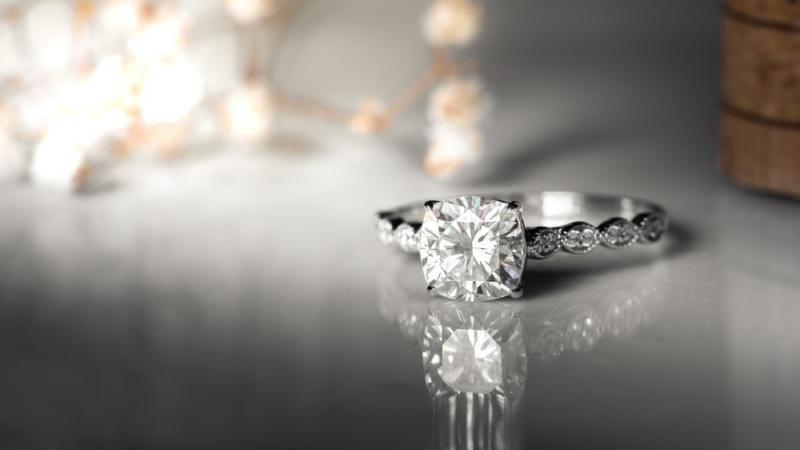
Durability And Hardness
Ensuring the longevity of our jewelry is crucial, which means that the gems we choose should be durable and resistant to scratches.
On the Mohs hardness scale, white sapphires rank at 9, while diamonds hold the highest score of 10. However, in practical terms, this distinction bears little significance. Diamonds can only be scratched by other diamonds, while white sapphires can be scratched by diamonds and moissanite.
That being said, both gems are resilient to everyday wear and tear caused by activities like handling coins, using nails, or encountering dust. So, there’s no need to worry about your sapphire getting damaged while going about your daily tasks. It is a tough gemstone.
When discussing durability, it refers to a gemstone’s ability to withstand physical impacts. Most gemstones, including white sapphires, are somewhat brittle and prone to chipping. Both diamonds and sapphires can chip if struck in the right spot.
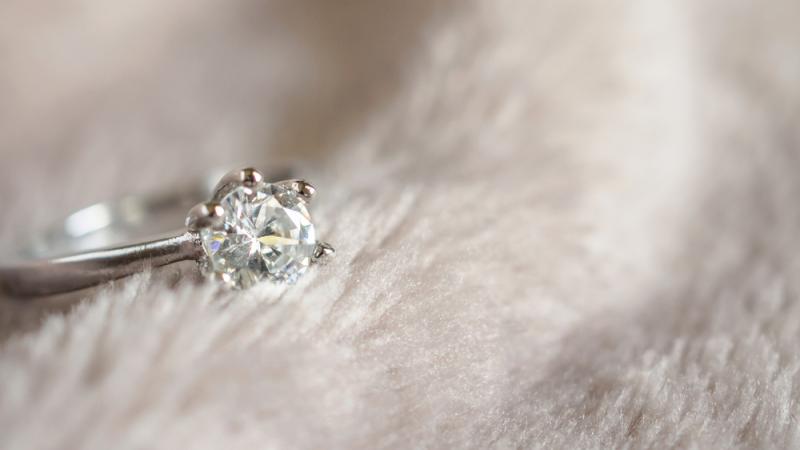
Price And Size
It is no secret that white sapphires are more budget-friendly compared to diamonds. This affordability factor has contributed to their rising popularity as an alternative to diamonds, particularly for engagement rings and other jewelry pieces.
Regardless of the carat size, white sapphires are a more cost-effective option compared to diamonds.
If your preference leans towards having a larger stone on your ring and you are not as concerned about the sparkle, a white sapphire might be the perfect choice. By opting for a white sapphire, you can get a significantly bigger stone for the same price as a smaller diamond.
However, it is important to note that the larger the white sapphire, the more distinct its differences become when compared to a diamond. So, if you desire a stone that closely resembles a diamond, it is advisable to stick to smaller white sapphires, as the disparities become less noticeable in those cases.
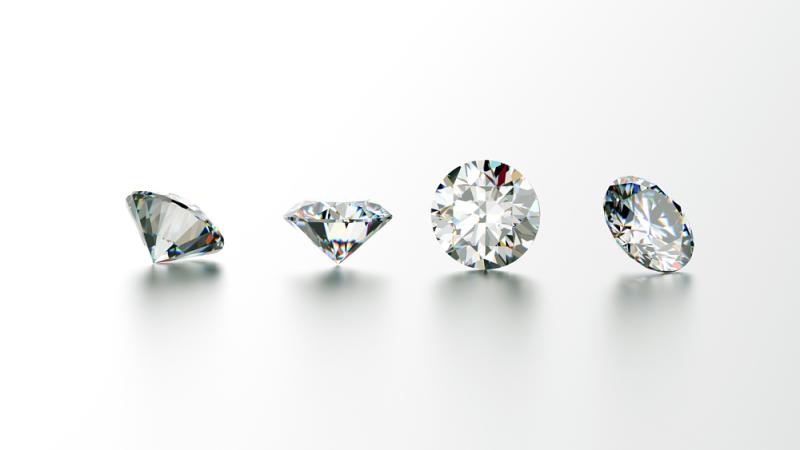
Conclusion
Ultimately, diamonds and white sapphires are distinct gemstones with their own unique characteristics, and they can each serve different purposes in jewelry. White sapphires can be a wonderful alternative to diamonds, offering a unique silver hue and a softer, subtler appearance. They are also more affordable and readily available, making them accessible to a wider range of buyers. On the other hand, diamonds are the preferred choice for those who are captivated by their iconic rainbow sparkle, rarity, and historical significance.
Both gemstones are durable and resistant to everyday scratches, but they are susceptible to chipping, similar to other gemstones. Additionally, both diamonds and white sapphires have lab-grown alternatives, although they may not be as popular as their natural counterparts.
In the end, whichever gemstone you choose, you can’t go wrong. Both diamonds and white sapphires are stunning and highly regarded as precious gemstones. So, enjoy your shopping experience and select the gemstone that resonates with your personal preferences and style.


